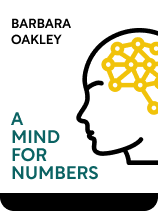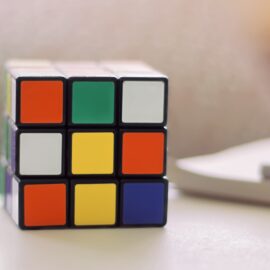

This article is an excerpt from the Shortform book guide to "A Mind for Numbers" by Barbara Oakley. Shortform has the world's best summaries and analyses of books you should be reading.
Like this article? Sign up for a free trial here .
What is spaced repetition? How can it help you study and learn?
Spaced repetition is a study method in which you revisit material multiple times at certain intervals. It’s a way of making your study time more efficient and effective.
Continue reading to learn about spaced repetition and how it can help you learn and remember anything.
The Spaced Repetition Study Method
What is spaced repetition? “Spaced repetition” is when you repeatedly revisit material at designated intervals. Author Barbara Oakley advises using this strategy with active recall studying because it will engrain the information in your memory better than the same amount of study crammed into a single session. For example, studying a list of vocabulary words once a day for two weeks will engrain them in your memory much better than going over the list 14 consecutive times in one sitting. This allows you to make the best use of your time while studying.
(Shortform note: This recommendation is not unique to Oakley. The importance of study sessions separated by a time delay is echoed by Scott Young in Ultralearning, and by Brown, Roediger, and McDaniel in Make it Stick. The idea has also been substantiated by studies. For example, Nate Kornell conducted a study to determine the optimal program for studying with flashcards. He observed that students who practiced intermediate spacing between study sessions performed better than those who did all their studying at once, and also better than those who broke it up into smaller sessions and studied too frequently.)
Set the Duration of Your Study Sessions
To practice spaced repetition as Oakley recommends, first determine the duration of your study sessions. This varies depending on the subject you are studying and how much of it you can absorb at once. However, Oakley suggests 25 minutes at a time is a good starting point. The more you study a given subject, the more efficient your brain will become at chunking that type of information, allowing you to learn more at a time.
(Shortform note: Spaced repetition has been the subject of many psychological studies, but relatively few of these studies address the duration of study sessions. Acknowledging this, one study concluded that your ideal study session should be long enough for you to master the material, but no longer. So, if you’re studying with flashcards, set aside each card that you answer correctly from memory, and wrap up your study session as soon as you’ve set aside the last card.)
Set the Spacing of Your Study Sessions
Next, determine the interval between study sessions. According to Oakley, this, too, depends on the subject and varies from person to person, but as a rule of thumb, you should revisit any new information within one day of first receiving it. Otherwise, you may be starting over from scratch. She explains that after a few repetitions, the neural pathways in your brain will be strong enough that you can go progressively longer between study sessions. As you continue studying, eventually, the pathways will become essentially permanent.
| Other Perspectives on Spacing In Ultralearning, Scott Young argues that if you revisit material too frequently, while the information is still fresh in your mind, your studying will be less effective than if you wait long enough that you have to regenerate the ideas from memory. He also points out, as Oakley does, that if you wait too long between study sessions, you will forget the information and have to relearn it from scratch. Thus, for efficient studying, it is important to find the optimal spacing between study sessions. In Make it Stick, Brown, Roediger, and McDaniel elaborate on this principle. They say that the harder your brain has to work to retrieve information, the more effective the recall exercise will be (provided that you successfully recall it without looking it up or otherwise re-learning it). They point out that there are two ways you can make recall more mentally strenuous: The less of a cue you give yourself to remember something, the harder it will be to recall, and the longer you wait to review the material, the harder it will be to recall. Thus, they assert that the optimal time for a recall session is when the information in your mind gets fuzzy—it’s no longer fresh, but it’s not gone yet either. |
Vary the Setting of Your Study Sessions
Oakley explains that, sometimes, your brain draws a subconscious connection between something you are learning and the place where you learn it, making that chunk of information easier to remember in that setting, but harder anywhere else. Thus, she recommends that, after the first few repetitions, you practice recalling the information in a variety of settings to ensure that it will be retrievable, regardless of where you are when you need it.
(Shortform note: One study showed that objects that seem out of place in a given setting are more likely to be remembered than objects that fit the setting. This doesn’t fully substantiate Oakley’s assertion that your brain stores information about your surroundings in the same chunk as the information you learn there, but it does support the premise that the environment in which you learn or encounter something influences how your brain stores it in memory. It also implies that studying math or science in a setting where you wouldn’t normally encounter these subjects may help you remember them, supporting Oakley’s recommendation, irrespective of the reason behind it.)
Oakley also says that when you recall a chunk of information in a different setting, your brain retrieves it using a slightly different pathway, allowing you to see the information from a slightly different perspective. Thus, studying in a different setting may help to deepen your understanding, as well as helping you remember.
| The Psychological Basis for the Influence of Setting on Perspective Oakley’s premise that reviewing information in a different setting allows you to see it from a different perspective might be difficult to rigorously substantiate by means of psychological studies: A researcher can have you study something and then take you to a different setting, but how can they measure the degree to which you see it from a different perspective? Nevertheless, we can subjectively support Oakley’s idea using an illustration that makes it more concrete: Suppose you learn in chemistry class that the “specific gravity” of a substance is the ratio of its density to the density of water. Then you go camping at a lake and decide to try building a log raft. How many logs do you need to tie together for the raft to support your weight? You could calculate that if you knew the specific gravity of wood, but out at the lake you don’t have internet access or other references to look it up. That’s when you realize that the specific gravity of a floating object is also equal to the fraction of the object below the waterline. You toss a stick in the water and observe that it floats about half in and half out of the water, so you conclude that the specific gravity of the wood is about 0.5. Armed with this knowledge, you build your raft, paddle around the lake, and ultimately return home with a better understanding of the concept of specific gravity. |

———End of Preview———
Like what you just read? Read the rest of the world's best book summary and analysis of Barbara Oakley's "A Mind for Numbers" at Shortform .
Here's what you'll find in our full A Mind for Numbers summary :
- How to make math and science intuitive
- Strategies for remembering complex concepts more easily
- How to build good study habits and avoid procrastination






